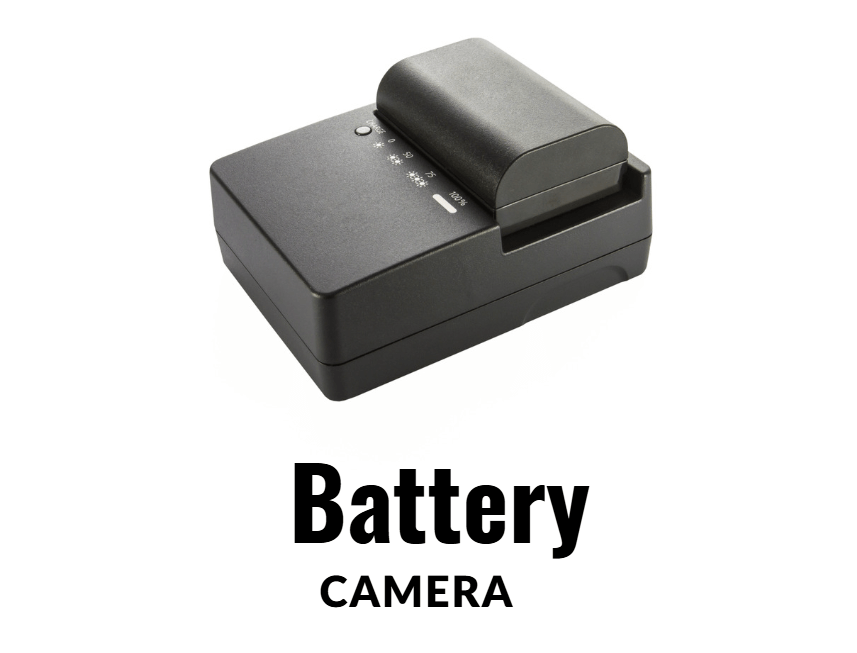
When I first set up my Blink cameras, I didn’t think much about the batteries. I figured I’d pop in whatever AA batteries I had at home and call it a day.
But after a few months of constant replacements, I realized not all batteries are created equal.
Choosing between rechargeable and non-rechargeable batteries for Blink cameras can feel overwhelming, but it’s a choice that impacts how often you need to replace them and how much you spend over time.
In this guide, I’ll break down everything you need to know about rechargeable vs. non-rechargeable batteries for Blink camera.
Whether you’re new to Blink or just tired of replacing your batteries too often, this article will help you decide which option is best for your needs.
Understanding the Power Needs of Blink Camera
Blink cameras are designed to run on two AA lithium batteries. These cameras rely on efficient battery power to handle tasks like motion detection, recording video, and sending alerts.
Using the wrong type of batteries can lead to short lifespans, reduced performance, and frequent replacements.
It’s important to stick with batteries that meet Blink’s recommended specifications. Whether you go with rechargeable or non-rechargeable options, you’ll want to ensure they’re high-quality and compatible.
The Case for Non-Rechargeable Batterie

What Are Non-Rechargeable Batteries?
Non-rechargeable batteries, also known as disposable batteries, are designed for one-time use. Once they’re depleted, you replace them with a new set.
For Blink cameras, non-rechargeable lithium AA batteries are the recommended choice.
Benefits of Non-Rechargeable Batteries
Longer Life Per Charge: High-quality lithium AA batteries, like Energizer Ultimate Lithium, can last up to 12 months in a Blink camera under normal use.
Consistent Performance: These batteries deliver steady power, ensuring your Blink camera works reliably.
Ready to Use: Non-rechargeable batteries come pre-charged, so you don’t need to worry about charging them before use.
Cold and Heat Resistance: They perform well in extreme temperatures, making them ideal for outdoor cameras.
Drawbacks of Non-Rechargeable Batteries
Cost Over Time: While they last a long time, the cost of replacing them adds up over time.
Environmental Impact: Disposable batteries create waste, which can be harmful to the environment if not disposed of properly.
The Case for Rechargeable Batteries
What Are Rechargeable Batteries?
Rechargeable batteries, as the name suggests, can be recharged and reused multiple times. Popular options for Blink cameras include NiMH rechargeable batterie like Panasonic Eneloop Pro.
Benefits of Rechargeable Batteries
Cost Savings Over Time: Although rechargeable batteries cost more upfront, they save money in the long run since you can use them hundreds of times.
Eco-Friendly: By reducing the need for disposable batteries, rechargeable options are better for the environment.
Convenience: You’ll always have a fresh set of batteries if you keep a charged spare set on hand.
Drawbacks of Rechargeable Batteries
Shorter Single-Charge Life: Rechargeable batteries don’t last as long as lithium AA batteries on a single charge, meaning more frequent recharges.
Initial Cost: The upfront cost is higher, especially when you factor in the need for a charger.
Temperature Sensitivity: Rechargeable batteries may not perform as well in extreme cold or heat.
Key Differences Between Rechargeable and Non-Rechargeable Batterie
| Feature | Rechargeable Batteries | Non-Rechargeable Batteries |
|---|---|---|
| Lifespan Per Use | Shorter (weeks to months) | Longer (up to 12 months) |
| Cost | Higher upfront but cheaper over time | Lower upfront but costlier over time |
| Environmental Impact | Low (reusable) | High (disposable) |
| Temperature Resistance | Moderate | High |
| Convenience | Requires charging | Ready to use |
Factors to Consider When Choosing Batteries for Blink Cameras

1. How You Use Your Cameras
If your Blink cameras are in high-traffic areas and record frequently, non-rechargeable lithium batteries might be better since they last longer. For cameras with less frequent use, rechargeable batteries can be more economical.
2. Your Budget
Non-rechargeable batteries cost more over time, but they’re easier to manage. Rechargeable batteries require an initial investment, but you’ll save money in the long run.
3. Environmental Concerns
If you’re trying to reduce waste, rechargeable batteries are the way to go. They can be reused hundreds of times, which means fewer batteries in landfills.
4. Outdoor vs. Indoor Use
For outdoor cameras exposed to extreme temperatures, non-rechargeable lithium batteries are a better option. They perform reliably in both hot and cold weather, whereas rechargeable batteries might struggle.
Popular Options for Blink Cameras
Best Non-Rechargeable Batteries
Energizer Ultimate Lithium AA: The longest-lasting and most reliable option for Blink cameras.
Duracell Lithium AA: Slightly cheaper than Energizer but still highly effective.
Best Rechargeable Batteries
Panasonic Eneloop Pro: High-capacity rechargeable batteries that are perfect for Blink cameras.
AmazonBasics Rechargeable AA: A budget-friendly alternative with decent performance.
How to Maximize Battery Life
No matter which type of battery you choose, there are steps you can take to make them last longer:
Adjust Motion Sensitivity: Reduce sensitivity to avoid unnecessary recordings.
Use Scheduled Recording: Set specific times for your cameras to be active.
Check Wi-Fi Signal: Keep your cameras within range of your router to reduce power drain.
Limit Live View Usage: Use Live View only when necessary, as it drains batteries quickly.
My Recommendation
If you’re looking for convenience and long-lasting power, go with non-rechargeable lithium batteries like Energizer Ultimate Lithium. They’re the best choice for outdoor cameras or high-traffic areas.
For indoor cameras or those with less frequent use, rechargeable batteries like Panasonic Eneloop Pro are a great way to save money and reduce waste.
Conclusion
Choosing between rechargeable and non-rechargeable batteries for Blink cameras comes down to your needs and preferences. Both options have their strengths, and the right choice depends on how you use your cameras, your budget, and your environmental priorities.
Can I use rechargeable batteries in Blink cameras?
Yes, rechargeable batteries like Panasonic Eneloop Pro work in Blink cameras, but they may not last as long as non-rechargeable lithium batteries.
Which batteries last the longest in Blink cameras?
Non-rechargeable lithium batteries, like Energizer Ultimate Lithium, can last up to 12 months in Blink cameras.
Are rechargeable batteries better for the environment?
Yes, rechargeable batteries reduce waste since they can be reused hundreds of times.
Do rechargeable batteries work well in cold weather?
Rechargeable batteries may not perform as well as lithium batteries in extreme cold.
What is the recommended battery type for Blink cameras?
Blink recommends using 1.5V AA lithium batteries for the best performance.






















